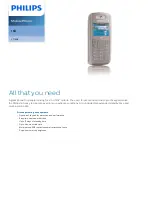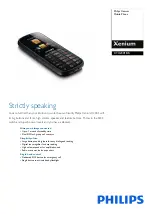
21
SAR Information
SAR Compliance
Your device is designed not to exceed the limits of emission of radio waves
recommended by international guidelines.
SAR (Specific Absorption Rate) is the measurement of body-absorbed RF
quantity when the device is in use. SAR value is ascertained according to the
highest RF level generated during laboratory tests.
The SAR value of the device may depend on factors such as proximity to the
network tower, or use of accessories.
The SAR value of the device at the head and body are x.xx W/kg and x.xx W/kg
respectively averaged over 1 gm of human tissue.
SAR Recommendations
Use a wireless hands-free system (headphone, headset) with a low power
Bluetooth emitter.
Keep your calls short and use SMS whenever more convenient. This advice
applies especially to children, adolescents and pregnant women.
Prefer to use your handset when the signal quality is good.
People having active medical implants should preferably keep the handset at
least 15 cm away from the implant.
Maintain a preferable distance of 15 mm from the device.
The FCC Advice
Many people mistakenly assume that using a cell phone with a lower reported SAR
value necessarily decreases a user’s exposure to RF emissions, or is somehow “safer”
than using a cell phone with a high SAR value. While SAR values are an important tool
in judging the maximum possible exposure to RF energy from a particular model of cell
phone, a single SAR value does not provide sufficient information about the amount of
RF exposure under typical usage conditions to reliably compare individual handset
models.
World Health Organization (WHO) Advice
Organizations such as the World Health Organization and the US Food and Drug
Administration have stated that if people are concerned and want to reduce their
exposure they could use a hands-free device to keep the handset away from the head
and body during phone calls, or reduce the amount of time spent on the phone.





































